Rincon de la Vieja Volcano National Park - A great place for walking tour in Guanacaste Province of Costa Rica
On our third morning in the Four Seasons Resort Papagayo, we put on our walking shoes and boarded a bus that would take us to Rincon de la Vieja Volcano National Park. This was going to be a 1.5 hour long run and we would be passing through Liberia, the largest city in the Guanacaste Province. En route, we came across unmistakable signs of Americanization in the form on a subway, MacDonald's, and Burger King, in Liberia. KFC too was just a turn away.
Related Blogpost from Costa Rica - Snorkeling & Catamaran ride in Pacific Ocean, Costa Rica
After Liberia, our bus drove on the Inter American Highway for about 45 minutes. This Highway is the Central American stretch of the Pan American Highway. The Pan American Highway runs through almost the entire Pacific side of North, Central, and South America, with a rainforest gap of only about 160 km between South and Central America. This Gap is known as the Darien Gap and isn't motorable. You need to go via the sea, unless you are bent upon making history, and not in a way that you can be sure to be alive and unhurt at the end of it.
Related Blogpost from Costa Rica - Snorkeling & Catamaran ride in Pacific Ocean, Costa Rica
Anyways, once you get off the Inter American Highway, you hit a slightly rougher patch and soon arrive at the toll gate where you need to pay a toll of 7000 colones to pass through. Ironically, the road you land up on after paying this toll is the worst on this stretch. One can smile about this as much as one wants, but you really do not have an option if you wish to enter the Las Pailas Trail.
Related Blog-post from Costa Rica - Things not to miss in & around Jaco Town of Costa Rica - Beaches, Birds & Landscapes
After this, you arrive in almost no time and once you are past the entrance, where you can take a loo break (because there is no option when you are on the trail) and have a few snacks as well. This is also the place where you should apply your sunscreen, because it is going to be quite sunny once you are outside. This is also the place to spray yourself with an insect repellent, because you may come across bugs and mosquitoes once on the trail.
Related Blog-post from Costa Rica - Travel Guide for Monteverde Cloud Forest Reserve, Costa Rica - Pura Vida !
We were glad to be accompanied by our naturalist guide because otherwise we would have been completely clueless about what we were seeing. The first species we came across was the leaf-cutter ants. These black ants are easy to identify because the workers can be seen carrying huge sections of green leaves. Their tiny bodies are barely visible beneath them. Wherever we came across these ants working hard, we took all precautions not to step on them.
Other Blogpost from Costa Rica - Tour of our room at Four Seasons Papagayo Peninsula, Costa Rica
And then we came across a colony of fire ants, and we were careful to keep our distance from them. After the bullet ants, which boasts of being able to give the most painful insect bite of all the insects in Costa Rica, both fire ants and leaf cutter ants too can give some really nasty bites. And God forbid if you discover that you are allergic to their bites...
Other Blogpost from Costa Rica - Tour of our room at Four Seasons Papagayo Peninsula, Costa Rica
Now we were walking under a thick canopy of trees and it was almost pleasant. Soon we heard rustling in the branches above and were surprised to see a monkey like creature that seemed to have 5 limbs. These were some spider monkeys who were performing impossible-looking antics on the trees. The way they use their tails is quite impressive.
Related Blogpost from Costa Rica - Hiking around Blanca Beach around Four Seasons Resort in Papagayo Peninsula, Costa Rica
We were still following the spider monkeys, when a sound resembling that of a distant Tyrannosaurus Rex started echoing around. Our naturalist guide was quick to inform us that these were the howler monkeys, who are considerably less aggressive than the adorable-looking white-faced monkeys. Moreover, the howlers are vegetarians. The white-faced monkeys, on the other hand, is an omnivore, with the variety in Guanacaste being a little more vicious than the others. The variety in Guanacaste is known to eat magpies, parrots, squirrels, and even baby coatis.
Other blogpost from Costa Rica - Irazu Volcano National Park - Must visit place around San Jose & Cartago cities of Costa Rica
The trail so far had been very gentle, but it was getting warmer and warmer. We had just climbed up a flight of rock stairs when smell of sulfur hit us. The guide informed us that we were close to one of the pools of bubbling mud, one of the signs that we were very close to an active volcano.
Related Blog-post from Costa Rica - Incredible Birds of Costa Rica - Part 1 || Hummingbirds
And soon enough, we came upon this pool. This was the first time I was looking at sulfur mud pools. It was a fascinating sight. But the smell was quite overwhelming and it was considerably warmer here. This was natural, I guess, considering that the mud in the pool was practically boiling. This mud apparently has medicinal qualities and is used in beauty treatments etc.
Related Blogpost from Costa Rica - Teatro Nacional de Costa Rica in San Jose City of Costa Rica, Central America
Because of the heat, I wasn't too upset to get out of the area. And very soon we came across a little waterfall. According to our guide, the flow that day was good and he hadn't told us about the waterfall earlier because he did not want to set the wrong expectations. Apparently the waterfall is quite unpredictable. On some days, there's lot of water and on some days it is just a trickle.
Related Blog-post from Costa Rica - Travel Guide for Monteverde Cloud Forest Reserve, Costa Rica - Pura Vida !
Now we started our final stretch on the trail. The vegetation now was sparser, though the trees were still quite tall. Here we observed parasitic relationship between trees. We saw a tree clinging for its dear life to another tree. Apparently, the dependent tree clings to another tree close to it when it grows and with time, it manages to kill the tree that had supported it during its growing years. The end result is quite beautiful actually (please don't judge me for saying this). parasitic tree grows as a lattice around the larger supporting tree and once the killing is complete, this lattice that survives looks quite amazing. The parasitic tree is quite appropriately named as the strangler fig.
Related Blog-post from Costa Rica - Travel Guide for Monteverde Cloud Forest Reserve, Costa Rica - Pura Vida !
En route we saw a couple of large birds, which were identified as the male and female Great Curassows. These birds were pretty much sitting around, not getting too bothered about our presence. However, the birds were behind some trees and though we were able to capture some photographs of these birds, they got lost because of an iPhone glitch. :(
Related Blog-post from Costa Rica - Things not to miss in & around Jaco Town of Costa Rica - Beaches, Birds & Landscapes
The walk finally led us to a clearing where there was a small lake kind of a body and one could look at hills all around. We could see steam coming out of the ground from various places. The sky was blue and there were butterflies around. If it wasn't so hot and humid and the smell of sulfur wasn't so strong, I could have stayed at this place for a long time. However, we headed back soon.
The entire trail took close to 2 hours, but that was because we took it easy. Our guide stopped frequently to point out interesting trees and insects and also explained quite a bit about the ecosystem. It was not only a new experience, but also an educational one for us. But we weren't really sad that it had come to an end, because we would be going for river-tubing next. :)
Related Blogpost from Costa Rica - Incredible Birds of Costa Rica - Part 2 || Motmots, Toucans, Trogons, Quetzals, and Macaws
Related Blogpost from Costa Rica : Incredible Birds of Costa Rica - Part 3 || Woodpeckers, Flycatchers, Kingbirds, Tanagers, Parakeets, Sparrows, Finches, and Swallows
Related Blogposts -


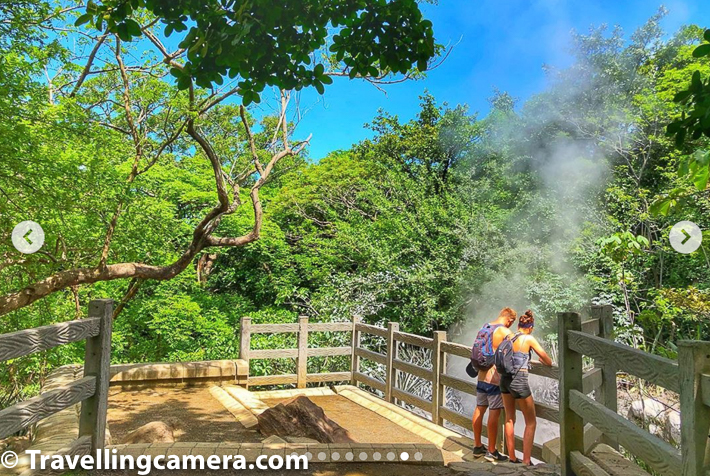








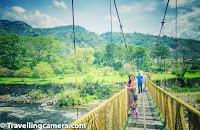


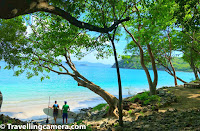
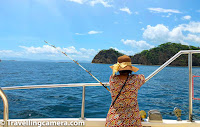



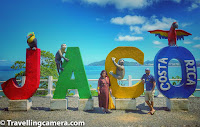

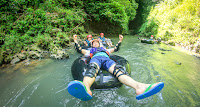



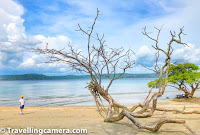

.jpg)
Comments